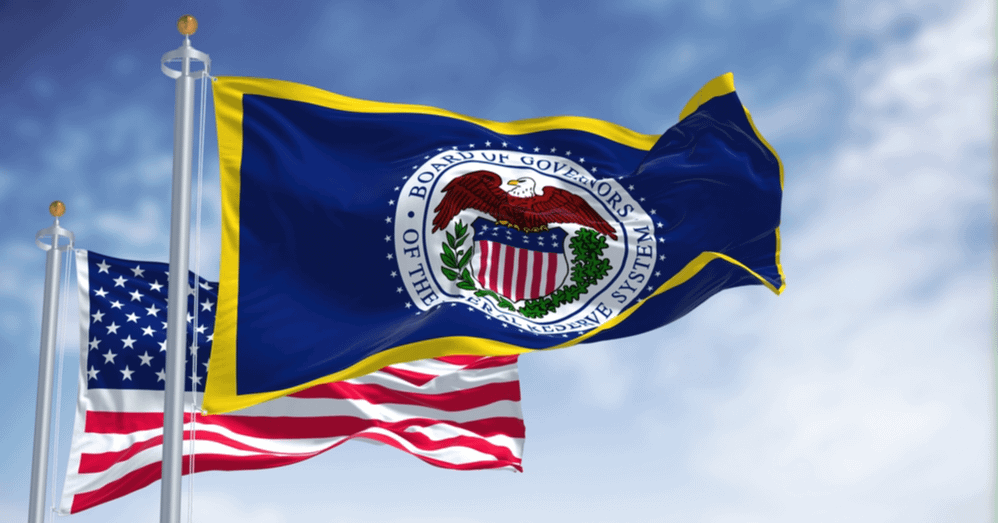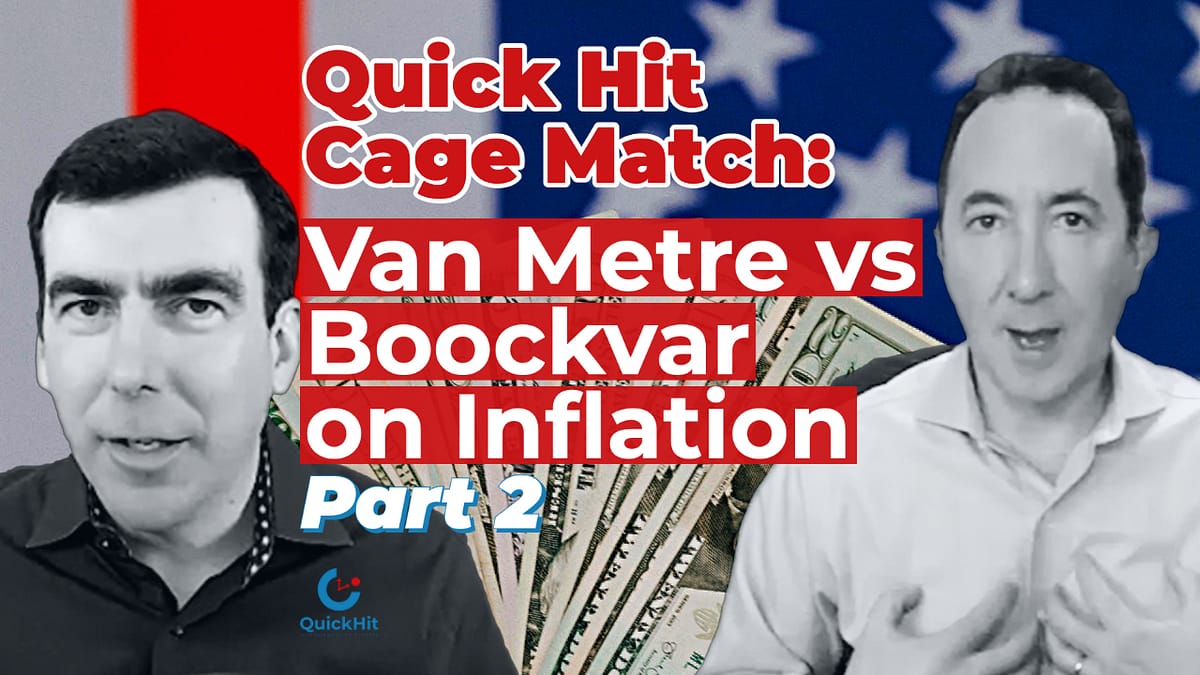This podcast is originally produced and published by BFM 89.9 and can be found at https://www.bfm.my/podcast/morning-run/market-watch/2024-fed-hawk-rate-cuts-oil-red-sea-dollar.

Welcome 2024 with our NEW YEAR SALE!
Save 80% off your CI Markets Premium subscription and harness the power of AI to optimize your investments. Only $99/year!
✅ Create and forecast your own investment portfolios.
✅ 94.7% market forecast accuracy.
✅ 1,600+ assets forecasted every week.
Subscribe at https://completeintel.com/newyear/. Promo ends Jan. 4th.
The BFM hosts discuss the current status of global markets and the impact of the recent Fed minutes on market sentiment. They interview Tony Nash, CEO of Complete Intelligence, who provides insights on the potential impact of the Fed’s hawkish tone on asset allocation and equity markets, as well as the implications for the US dollar strength and Asian equity markets. Nash also touches on the volatility in oil prices and the potential impact of geopolitical events on crude shipments.
Additionally, the show provides updates on Cal-Maine Foods, including a significant drop in net income and a jury’s decision regarding an alleged conspiracy to raise egg prices.
Transcript:
BFM
BFM 89.9, it’s 7:05, it’s Thursday. It’s the fourth of January listening to The Morning Run with Keith Kam and I’m Wong Shou Ning.
Now in about 30 minutes, we’ll discuss the current status of Jimmy Lai, the founder of Apple Daily, a once upon a time newspaper in Hong Kong’s National Security Trial.
But in the meantime, let’s recap how global markets closed yesterday. So on Wall Street, it was pretty much a red day. The Dow Jones ended 0.8 % lower. The S&P 500 closed 0.8 % lower as well. The Nasdaq fell 1.2 %. Earlier in the day in Asia, the Nikkei was down 0.2 %. Hongkong’s Hang Seng closed 0.9 % lower. Shanghai’s Composite rose 0.2 %. Singapore’s STI was down 0.9 %. The FBMKLCI managed to gain 0.6 %.
Okay, so for some insights as to where international markets are heading, we speak to Tony Nash, CEO of Complete Intelligence. Good morning, Tony. I think it’s still not too late to wish you a happy 2024. Shall we start with the Fed minutes that just came out last night? Oh, well, your time today. I just want to find out what you think about the language they used because they just basically said that it might be appropriate to maintain a restrictive sense for some time. Does this mean that the mantra of hire for longer is still relevant this year?
Tony Nash
Yeah, I think it is. So what was interesting about the last Fed press conference is how doveish the President, the chairman came across and the markets read it as the punch bowl is back and as extremely doveish telegraphing from the Fed.
I think as we see these notes, we realize that the Fed really is serious about hire for longer. There are some banks that expect something like seven rate cuts in the first half of the year, something like that. It just sounds a little bit overly aggressive.
When we saw the Fed’s last press conference, it seemed like a serious discontinuity from their hire for longer mantra that they had been saying for two years, two, three years. And so it really did force a lot of us to scratch our head and say, Wait, why are they doing that? Is this political? Is there some data that the Fed is seeing that we’re not seeing?
And I think as we see the minutes today, we realize that neither one is the case. It’s just that Chair Powell came across more doveish than he probably intended.
BFM
Okay, so what does this then mean for asset allocation, or at least let’s focus on equities. Is that the reason why the new year has started on such a negative note, especially for the Nasdaq?
Tony Nash
Oh, yeah, definitely. I think technology, especially, does well in environments of low interest and loose monetary policy. If we are not going to see a rapid loosening of monetary policy, meaning lower interest rates, more cash in the system, then the valuations that we see in technology are not questionable.
The other consideration is this, and we’ve talked about this before. If we don’t have accelerating inflation, and this seems a little bit counterintuitive, but if we don’t have accelerating inflation, then the margins that companies can charge start to compress. Companies can’t raise their prices as quickly using inflation as a justification, and competition comes in and we start to see price competition again, which is normal for markets.
I think there’s going to be a lot of questions around the valuations that companies have, especially if the Fed persists with this higher for longer messaging and we don’t see doveishness in the pipeline.
BFM
Tony, how do you reckon this will play into the US dollar strength, which has pretty much been the theme for 2023, going into 2024? Where do you think this will go?
Tony Nash
Well, I think it’s status quo for the US dollar. If we’re not seeing aggressive easing, if we’re not seeing accelerated QE or a halting of QT, quantitative tightening, then we can expect the dollar to stay in the environment, all else held equal. We can expect the dollar to stay pretty consistent.
One of the questions there is around fiscal. How much fiscal spending will the US government do? Which creates a demand for dollars, right? But it is an election year, so I wouldn’t expect fiscal spending to really ease up that much. The real question is, and we look at the CNY and the band that the CNY is trading in, there was some expectation that we’d see more strength in CNY and JPY and other currencies, and we’re just not seeing that today because of what we’ve seen coming out of the Fed.
BFM
What does this then mean for Asian equity markets? Because there was the expectations that as the Fed unwinds and becomes more doveish, there would be fun inflow into emerging markets. Is that theory now not going to be disputed?
Tony Nash
Yeah, I think it will be disputed because look, if you have a stronger dollar, of course, you have value retention in a stronger dollar. If you have a stronger dollar, you have, on a relative basis, you have weakening, not all, but some weakening Asian currencies. Then if you have those weakening Asian currencies, then the inflows of capital from international markets to those middle income and emerging markets and even, say, Japan, are relatively lower because the currency is a risk for those investors.
I don’t necessarily think it means that Asian markets are out or are negative, but I do think it means that emerging markets generally will take less of an allocation than some people had thought in 2024. The economic managers in Asia are going to have to be much more careful with their monetary policy to make sure that their currencies don’t erode in the wake of dollar strength. When I say dollar strength, I’m not saying that the dollar is going to rocket up in value, but even if it stays at its current level, it’s a relatively strong currency.
BFM
Okay, Tony, where do we then park our money? Because for us in Asia, it’s all in the red on a year to date basis, so is the United States. So where can we put our cash to work, or do we just keep cash for the moment then?
Tony Nash
I don’t know that I would necessarily keep cash. I think you have to look at, say, commodity-related stocks, miners, that thing. You have to look at financial services. You have to look at things that are consistent businesses, regardless of, say, the business cycle. And if we start to see margins erode, so some of these things that we saw that were really attractive over the past couple of years, like consumer discretionary and things like dining out in restaurants and these sorts of things where they could pass along inflation to customers, those things are going to be relatively less profitable.
Assuming we continue with the hire for a longer environment and the allocations that people would make there would necessarily pull back as people look for more consistent, probably value-ish, I wouldn’t necessarily say full value, but value-ish type of stocks. Really, it’s a time to be value-aware and relatively conservative until we have a clear idea of the path.
BFM
Tony, we’ve seen some volatility in oil prices due to what’s happening in the Red Sea area. How do you see crude prices trending over the next week or so as energy markets seek clarity in this situation?
Tony Nash
Yeah, we saw Brent up, I think, around three and a half % today. It may be, give or take a little bit, but Brent was up quite a bit today to, I think, around 78, 50. But that’s down from, say, $94 in October. So Crude is still relatively weak compared to where it was just a few months ago.
There is slack in the environment and we are starting to see, say, the job market in the US be weaker. We’re starting to see more, say, layoff announcements, these sorts of things. We’re seeing growth in, say, China expected to continue to slow. Europe really isn’t picking up.
The question, I think, is on the demand side. If we had tight demand, we could expect to see crude prices spike up pretty quickly, but we’re not necessarily seeing that. The real question is, are we going to have a major geopolitical event that’s going to halt crude shipments? We’re not necessarily seeing that. We’re seeing some putty rockets in the Red Sea, but we’re not necessarily seeing major disruptions yet.
And if that becomes a major disruption, then yeah, we could expect some serious rises, especially in Brent, but we’re not necessarily there yet. There’s some volatility, there’s some up and down. I would expect to see some action taken against the Hootie positions ongoing for the next several weeks to take them out and reduce that risk.
BFM
All right. Thank you very much for your time. That was Tony Nash, CEO of Complete Intelligence, reminding us that the Fed remains still quite hawkish, their tone. And as a result, it looks like the reign of the King dollar continues, at least for a while. Status core, he says. But there are things that we could continue watching for perhaps… I mean, everything seems to be hinged on China’s long-awaited recovery since 2022, and I don’t know if that’s going to happen in 2024, but let’s wait. And see, I guess.
China, the comeback hit that didn’t materialize. Maybe 2024 is their year. But let’s turn our attention to Cal-Maine Foods. Now you’re wondering, what does this company do? It is actually the United States largest shell-egg production company. They reported a net income of $17 million for the second quarter of fiscal 2024. Now what was significant was the 92 % drop compared with $198 million in the same quarter last year. Was there foul play there? I don’t know. But CalMaine did say that one of its facilities in Kansas tested positive for Avient flu production at that facility was temporarily halted. The company is working around with other facilities to minimize disruptions.
Meanwhile, a jury has also found that Cal-Maine and other companies were liable for an alleged conspiracy to raise prices of egg products from 1998 to 2008. They have their own egg cartel there. That’s not an extraordinary type news. Sounds familiar, right? Oh, my goodness, Keith. You’re really rolling with all the puns this morning. Anyway, the jury did award plaintiffs around $18 million in damages. So that’s some context for you there.
Okay, so Cal-Maine, not much coverage on Wall Street. There are only three analysts that cover this job. And guess what? They’re evenly split because there’s just one buy, one hold, one sell. Consensus target price for the stock, $55. It was actually down $1.82 during regular market hours, trading to $54.86. The stock is actually down more than four % for what is the United States. Just two days of trading at this moment, right? Not very exciting. Oh, my goodness, there goes another pun. Up next, we’ll cover the top stories in the newspapers and portals. Stay tuned for that BFM 89.9.


